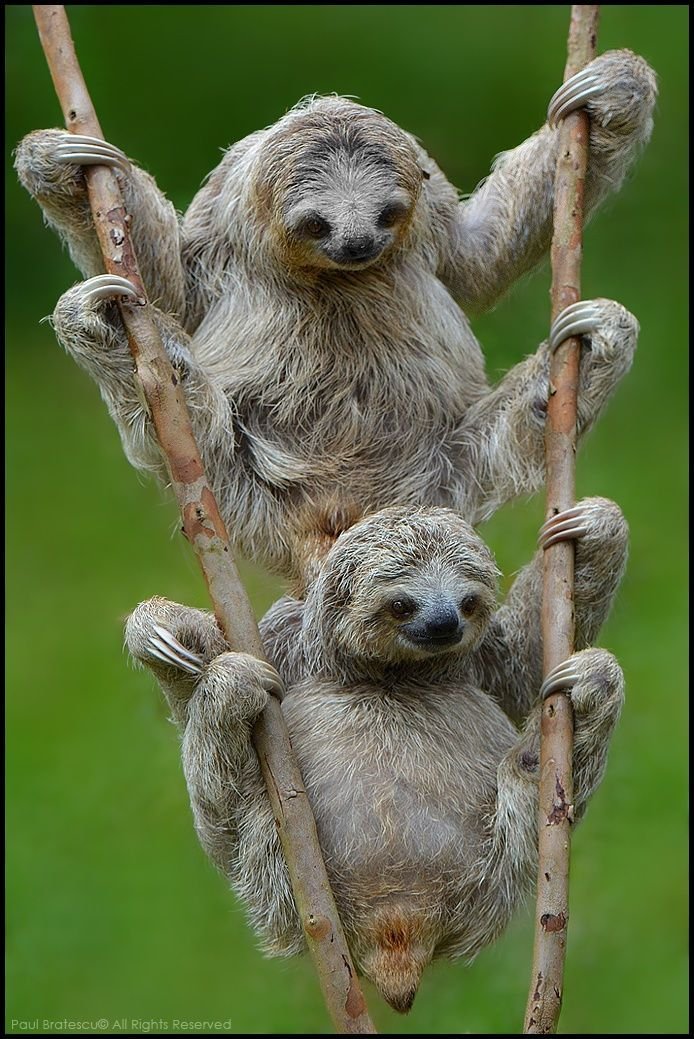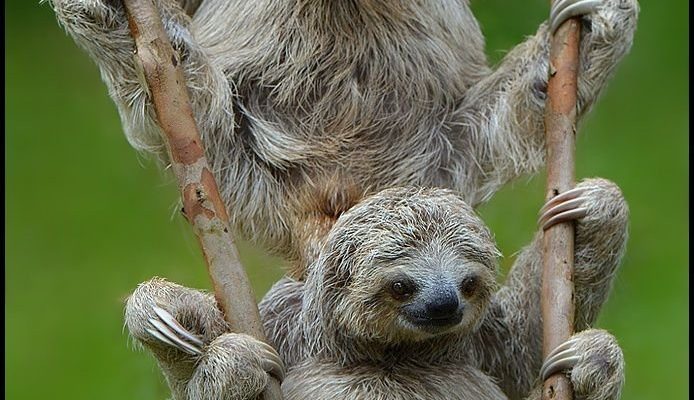
Three-toed sloths are generally solitary animals, but their approach to motherhood is anything but lonely. They form a close bond with their young, teaching them how to navigate their leafy world. So, let’s dive into how these incredible creatures manage the job of raising their little ones in the wild.
Understanding Sloth Motherhood
Sloth motherhood comes with its own set of challenges. Three-toed sloths typically give birth to one baby at a time, a little bundle that will remain dependent on their mom for several months. The gestation period for sloths can range from around 5 to 6 months, and when that time comes, the mother usually finds a secure spot high up in the trees. This keeps the newborn safe from ground-level predators.
New sloth babies are born with their eyes open and are instinctively able to grasp onto their mother’s fur. This clingy behavior is vital, as the mom limits her movements to accommodate her little one. You might be wondering how the mother manages to eat while carrying her baby. Well, it’s all about multitasking—she slowly moves through the treetops, munching on leaves while keeping her baby secure on her back.
The Bond Between Mother and Baby
The relationship between a three-toed sloth mother and her baby is incredibly special. For the first few weeks, the baby will stay close, often nestled within the mother’s warm fur. It sounds cozy, right? During this time, the mother is exceptionally protective. She uses her sense of smell to identify her baby and maintains close physical contact to ensure they feel safe.
This bond is not just about physical presence, though. The mother teaches her baby essential skills like climbing and finding food. As the baby grows, they might begin to mimic the mother’s movements, slowly learning to navigate their forest world. Here’s the thing: in the lush canopy where sloths live, a mother’s gentle guidance is crucial. Without it, babies would struggle to find food and avoid danger.
Feeding and Nutrition
Feeding is a huge part of a sloth’s life, and it’s just as important for the little ones as it is for the mothers. Sloths are herbivores, munching on leaves, buds, and fruit. The mother has to consume a variety of leaves to pass on the right nutrients to her baby. Interestingly, sloth babies often start sampling solid food around the age of five months, but they remain reliant on their mother’s milk for several more months.
Since sloths have extremely slow metabolisms, the nutrients from their leafy meals take a while to digest. This means the mother is always in a slow-motion eating frenzy, ensuring she has enough energy for both herself and her growing baby. You might find it surprising that sloths even have a diet based on relatively low-nutrient leaves, but it works for them, thanks to their unique adaptations.
Navigating Predators and Risks
The treetops might seem like a safe haven, but danger lurks even in the canopies. Three-toed sloth mothers must be vigilant against predators, which include harpy eagles and ocelots. To protect their young, sloth mothers often choose their habitat wisely. They look for areas with dense foliage that provide ample cover.
If a predator approaches, a mother sloth might freeze in place, embracing stillness to avoid being detected. Meanwhile, she’ll keep her baby close, using her body as a shield. This instinctual behavior is critical for survival in the wild, where every second counts when it comes to evading danger.
Independence and Growing Up
As the baby sloth grows, they gradually begin to explore their environment more independently. Around six months old, they start venturing slightly away from their mother, testing their climbing skills and foraging for food. It’s a bittersweet time for the mother, who has invested so much nurturing into her little one.
By the time they reach about a year old, sloth babies are often ready to strike out on their own, although they may still stay nearby for a bit longer. You might compare this to a teenager learning to drive—exciting but also a little nerve-wracking for the parent! The mother’s role transitions from caregiver to occasional guide, always watching from a distance.
Lessons Learned from Sloth Parenting
The way three-toed sloths raise their young teaches us a lot about patience, connection, and the importance of nurturing relationships. In a world that often feels rushed, sloth mothers remind us that great parenting takes time and a calm presence. They demonstrate that establishing close bonds can help young ones thrive in their environment.
This slow and steady approach to parenting can be a lesson for anyone—humans included. Taking time to nurture our relationships, whether with children or loved ones, can lead to stronger connections and healthier outcomes.
In conclusion, three-toed sloths are fascinating creatures, not only because of their leisurely lifestyle but also because of their unique parenting methods. By creating strong bonds, teaching their young, and ensuring safety, these sloths embody patient motherhood in the wild. So, next time you think of sloths, remember they’re not just cute and slow; they’re also dedicated parents navigating the challenges of life in the treetops.

